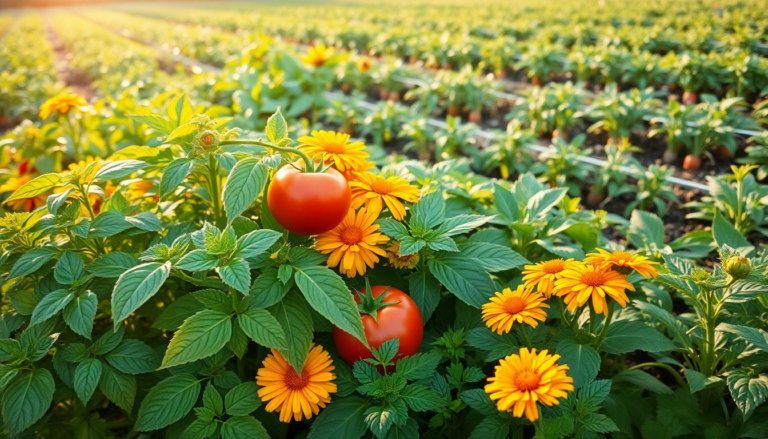Argomenti trattati
Have you ever wondered if some plants really can help each other grow? In the fascinating world of gardening, the idea of **companion planting** has sparked curiosity and debate for ages. The premise is simple: certain plants might support each other’s growth by attracting helpful pollinators or keeping pests at bay. But is it really as straightforward as it sounds? Today, let’s dig deeper into the science behind plant compatibility, bust some myths, and uncover the true dynamics that can lead to successful gardening practices.
Unpacking the Science of Companion Planting
The concept of companion planting hinges on the belief that some plants can create a friendly atmosphere for their neighbors. However, this notion often strays into the realm of folklore, lacking solid scientific backing. From my experience, gardening is an exciting blend of creativity and experimentation. While many gardeners find joy in the art of companion planting, it’s crucial to adopt a critical perspective.
One of the more scientifically supported ideas in this area is **allelopathy**. This is where certain plants release chemicals that can actually hinder the growth of others nearby. Take the **black walnut tree** (Juglans nigra), for instance; it produces a compound called juglone, which can be harmful to many other plants, including tomatoes and potatoes. But it’s important to note that not all plant pairings are detrimental; many can coexist quite harmoniously, even when planted close together.
Let’s look at strawberries and **brassicas** (like cabbage and broccoli). When these two are grown near each other, pests such as cabbage loopers can thrive, creating a real challenge for both crops. This illustrates just how vital it is to understand the relationships among plants for a flourishing garden.
Spotting Incompatible Plant Pairings
While the allure of companion planting is compelling, certain plant combinations simply don’t play well together. For example, **indeterminate tomato varieties** need staking and plenty of sunlight, making them poor companions for bush beans, which can overshadow them. Both crops end up competing for light, leading to less-than-ideal growth. Smart **space management** is key to cultivating a thriving garden.
Another classic mismatch is the pairing of potatoes and tomatoes. Both are prone to **late blight**, a disease that can wipe out entire crops under the right conditions. Planting them side by side can leave you at risk of losing both varieties at once – definitely not a gardener’s dream!
And then there’s lavender. While it attracts pollinators like bees, it prefers **low-nutrient, sandy soils**, which starkly contrasts with the rich, moist conditions loved by vegetables like tomatoes and peppers. This difference underscores the importance of understanding each plant’s unique environmental needs before deciding where to plant.
Separating Myths from Best Practices
Even with a wealth of knowledge about plant interactions, myths continue to circulate in the gardening community. For instance, the claim that onions stunt the growth of beans simply doesn’t hold water; if you’re short on space, feel free to plant these two together without concern. Similarly, the **allelopathic properties of fennel**, often cited as a reason to keep it away from other plants, aren’t conclusively proven in practical gardening scenarios. So, if you love fennel, go ahead and include it in your garden!
In conclusion, grasping the intricacies of plant compatibility is an ongoing adventure that balances creativity with analytical thinking. While some plants might be natural enemies, many can thrive together in harmony, as long as you respect their individual needs and growth habits. Remember, gardening is as much about **trial and error** as it is about established practices. So, why not roll up your sleeves and experiment a little? Who knows what delightful combinations you might discover!

